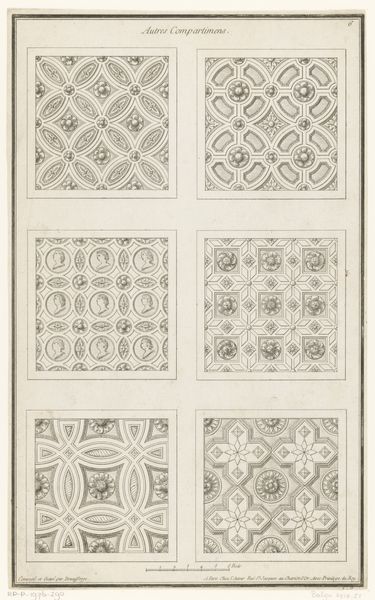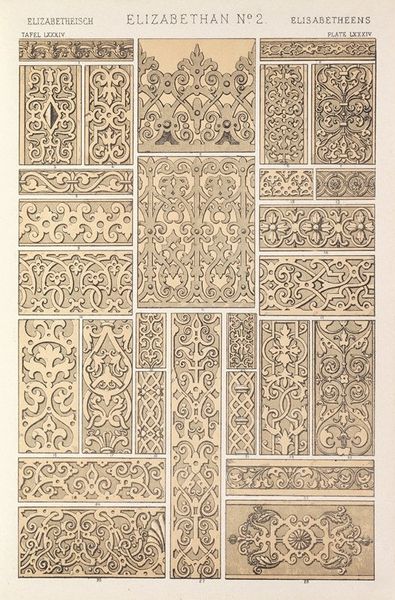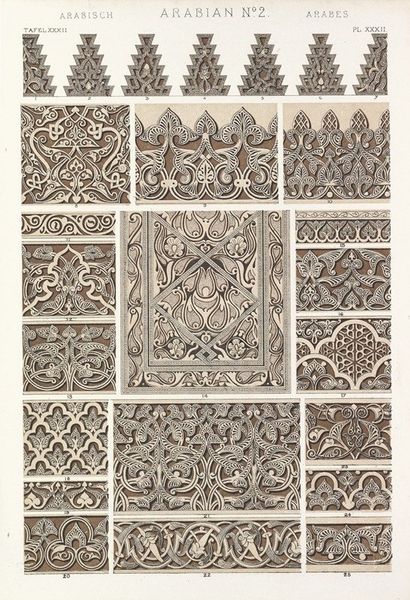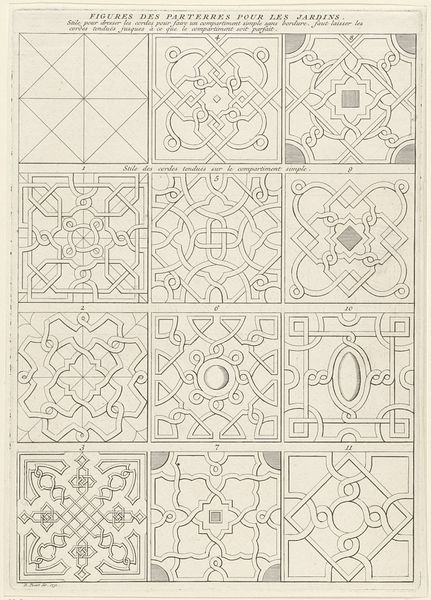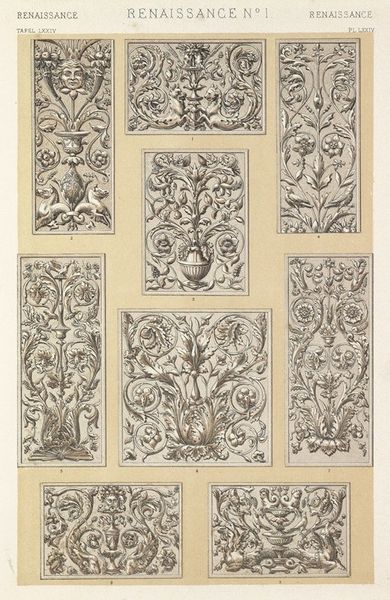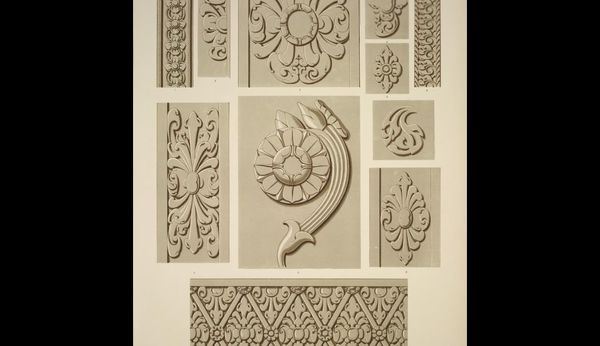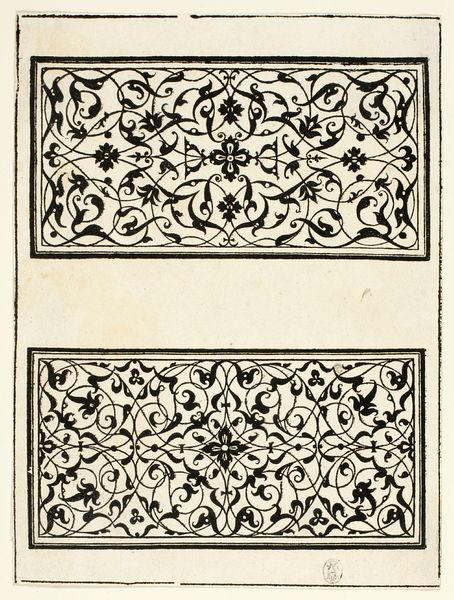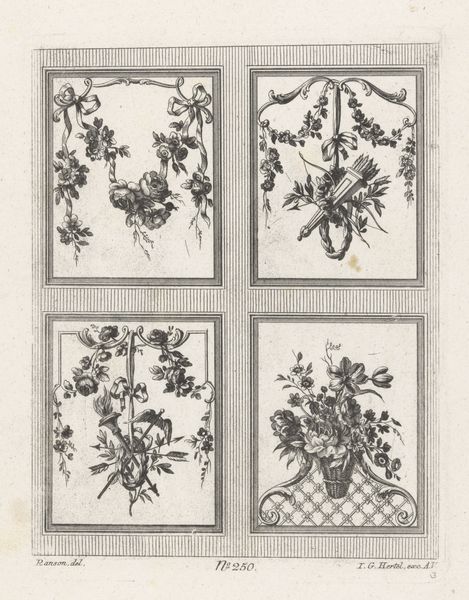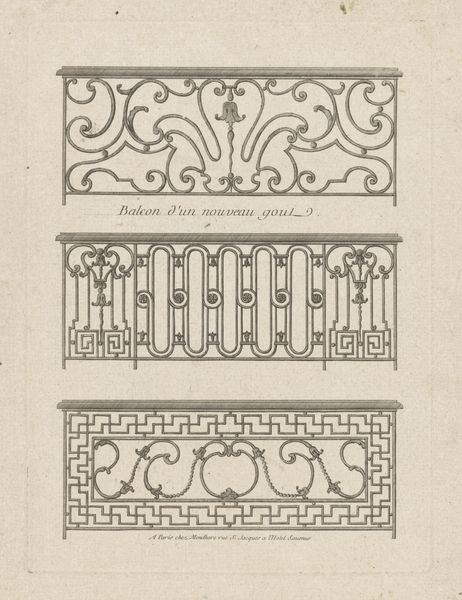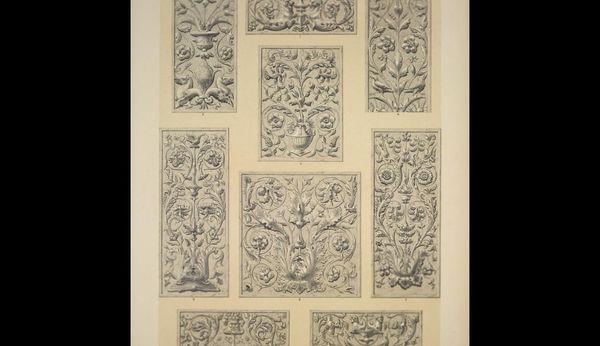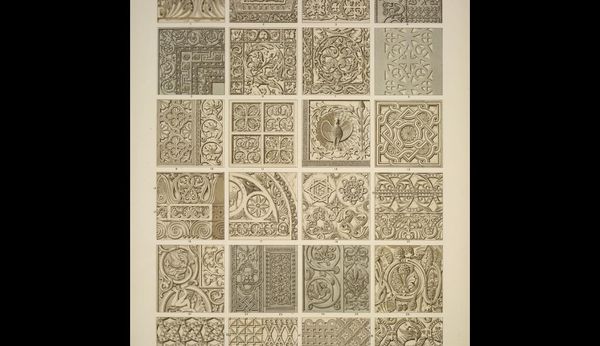
drawing
#
drawing
#
natural stone pattern
#
pattern design
#
repetitive shape and pattern
#
ethnic pattern
#
geometric
#
repetition of pattern
#
vertical pattern
#
pattern repetition
#
decorative-art
#
layered pattern
#
funky pattern
#
pattern work
Dimensions: height 435 mm, width 245 mm
Copyright: Rijks Museum: Open Domain
Curator: Let's turn our attention to Alexandre Eugène Prignot's "Vlakvulling van friezen en vierkanten," a drawing created sometime between 1832 and 1875. The intricate, repeating patterns evoke a sense of ornate elegance. Editor: Elegance yes, but it also feels incredibly systematic, almost mass-producible. Look at how the repeated square motifs create the feel of tile samples in a factory catalog. It speaks to the industrial impulse taking root at the time. Curator: Precisely! Note how each square employs different symmetrical arrangements—radial, bilateral—creating internal dialogues within the larger structure. The use of positive and negative space articulates each pattern distinctively. Editor: I find myself wondering about the craftspeople, though—the hands that would be translating this drawing into material form, perhaps inlaying wood or setting stone. This isn’t just an aesthetic exercise, it’s instructions, labor waiting to happen. How would the artist view the labour to produce the patterns? Curator: An excellent point. Consider, also, how the bordering details enhance each shape. The choice of simple lines, geometric motifs, and stylized flora reinforces the tension between organic and constructed forms, fundamental elements to structural design. The patterns within the grid frame invite our eyes toward multiple interpretations, and challenge us with questions of depth and surface, harmony and complexity. Editor: I am less drawn to that visual complexity, and instead feel curious about the raw materials. It would be interesting to analyze if it was for architectural decoration, as a cheaper substitute for crafted and material richness? We see here the dawn of mechanically-produced ornament, a new chapter of creative industries. Curator: I agree there is much we could unpack here. Prignot’s exploration of the modular system, invites us to reframe our very understanding of art making. Editor: Absolutely, I'm walking away intrigued to contemplate these shifting notions about material, craft, and production during this time.
Comments
No comments
Be the first to comment and join the conversation on the ultimate creative platform.
